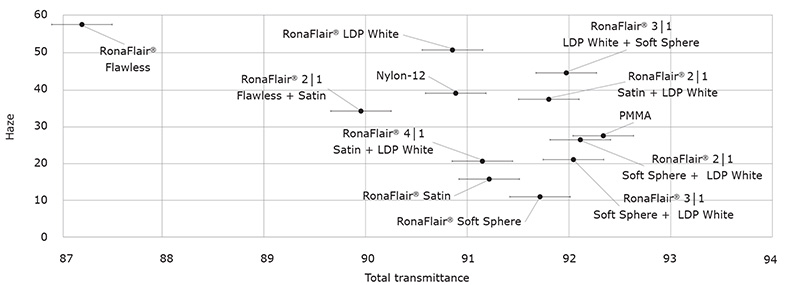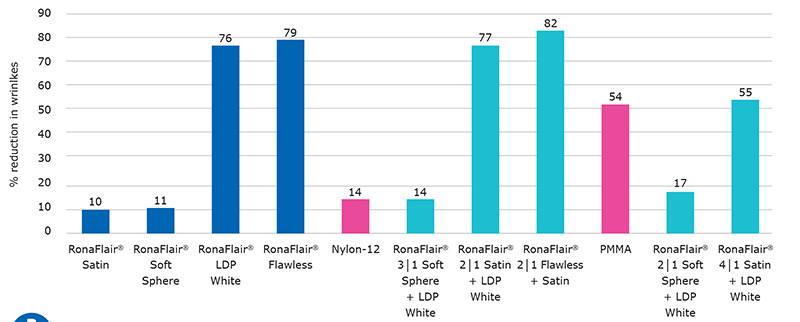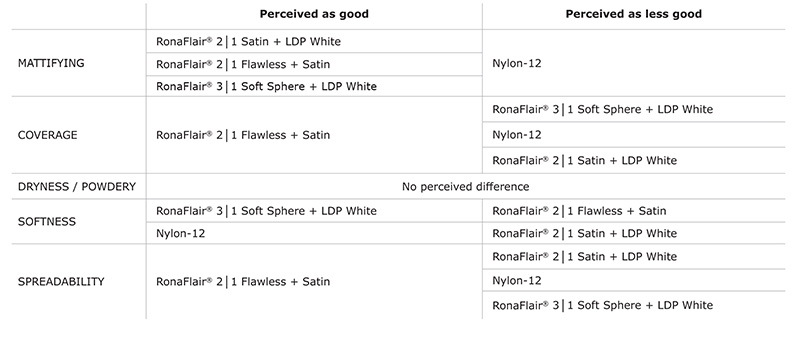Potentially solid polymers used in cosmetics (microplastics such as Nylon-12 and PMMA) need to be eradicated from our wastewater, the natural environment, and the food chain.
Consumers today want cosmetics brands to take responsibility and start using more sustainable ingredients. And society is increasingly pointing its collective finger at industry to take the lead. In response, companies need alternatives – plus data and research that show brands can deliver on their promises.
Little ingredients, big impact
In March 2019, the European Chemical Agency proposed controls on any kinds of microplastics that are added to leave-on and rinse-off cosmetics products.
The term microplastics refers to small, solid, polymercontaining particles measuring less than 5mm or fibers of less than 15mm. They are highly resistant to environmental biodegradation, fragmentate into “nanoplastics” and, unlike some ingredients used in rinse-off cosmetics, they do not dissolve in water.
When we wash off leave-on skin care products, they go straight down the drain with our wastewater. Although wastewater treatment plants are able to filter out 90% of microplastics, once in the environment they join the dangerous plastic soup swirling around in our oceans.
They have even been found in sea ice and polar sediments. Microplastics also accumulate inside animals, including fish and shellfish, and are thus entering the human foodchain.
How to mirror microplastics?
Merck offers an effective and scientifically proven alternative to microplastics – like-for-like solutions that allow you to replace Nylon-12 and PPMA. RonaFlair® Functional Fillers are sustainable mineral ingredients that – mixed in the right proportions – deliver a variety of cosmetic ingredients properties, from soft focus effects to wrinkle reduction, superior skin feel, and transparency.
Microplastics, plastic soup – whatever term we use for them, microplastics re-enter the food chain when humans harvest products from farms and nature. As a result, they are infiltrating the human body.
THE # FACTOR
Pressure on the global environment is intensifying. All around us, we are witnessing the tangible and sometimes tragic impact of human civilization on nature.
In reaction, consumers everywhere are hashtagging and demonstrating about their environmental concerns, openly demanding that brands take more responsibility for every product, ingredient, service, and process.
Consumers want the eradication of harmful ingredients along the entire value chain. Fail to react now to the calls for zero plastics, and the backlash in social media and news channels could be devastating for your business. And time is running out.
Zooming in on zero-tolerance
Millions of consumers are now looking for environmentally friendly alternatives to microplastics. So the challenge to cosmetic companies and other firms involved in the supply chain is to quickly develop alternatives and start using ingredients that contain zero microplastics.
But the way forward does not have to be a single-ingredient solution. When the environment is at stake, there’s rarely a silver bullet that will allow us to directly substitute problematic ingredients like-for-like.
Merck is already in a position to provide you with a range of alternative raw materials to replace ingredients currently comprising microplastics.
The microplastics that can be challenging to replace in cosmetic products are essentially fine particles. Our mixtures of RonaFlair® Functional Fillers come extremely close to the benefits of these fine particles, thus allowing producers to adjust the viscosity, appearance, texture, and stability of products while at the same time offering consumers the performance they already enjoy today.
And of course we also have the data, research, and scientific evidence to substantiate your important product claims.
What are functional fillers?
Functional fillers play a crucial role in the feel, look, and quality of cosmetics. For example, beauty products containing effective functional fillers are easier to apply, wear well, and help mask imperfections or skin discolorations.
The success formula of functional fillers revolves around platelets and spheres that influence the performance of the final products. For example, they allow cosmetics to:
- Glide onto the skin and feel silky
- Deliver rolling, powdery, or velvety textures
- Offer light shimmer and radiance
- Minimize imperfections like fine lines and wrinkles
- Add soft focus effects
- Enhance smoothness and extend wear.
Soft focus effect

Comparable soft focus effect to Nylon-12 and PMMA
Mixtures that mimic microplastics
Because single ingredients may not always be able to replicate the proven performance of Nylon-12 and PPMA, Merck has investigated a variety of alternatives to be used as texturizers and enhancers of visual properties. These teams of ingredients were thoroughly tested in our lab.
Wrinkle reduction

Significant improvement in wrinkle reduction compared to Nylon-12 and PMMA
Mixed in the right proportions, RonaFlair® Functional Fillers provide an immediate and effective alternative to microplastics, offering important cosmetic properties such as:
- Soft focus effect/li>
- Wrinkle reduction/li>
- Skin feel/li>
- Transparency or coverage.
Sensory comparisons: Results for RonaFlair® VS Nylon 12

Similar or better softness than Nylon-12 and PMMA
Sensory comparisons: Results for RonaFlair® VS PMMA

Similar to better coverage than Nylon-12 and PMMA

Similar to better coverage than Nylon-12 and PMMA
